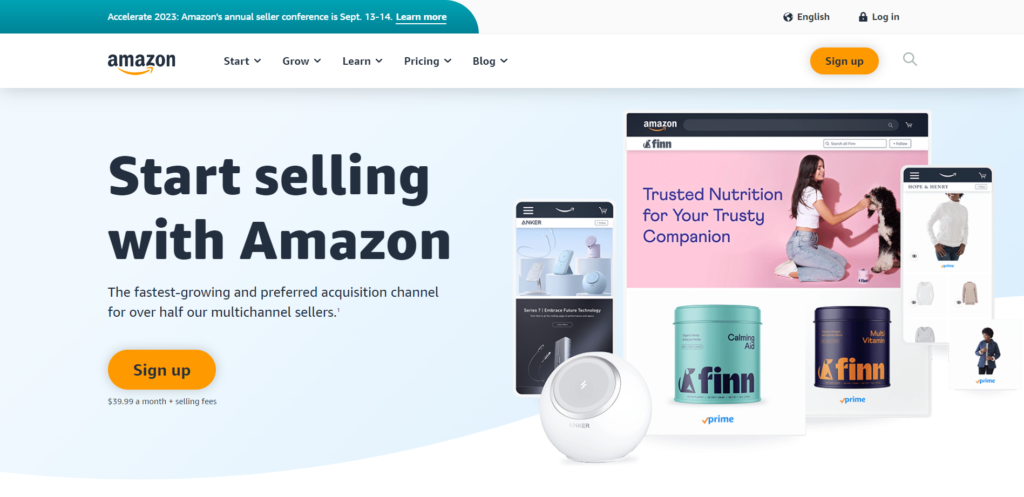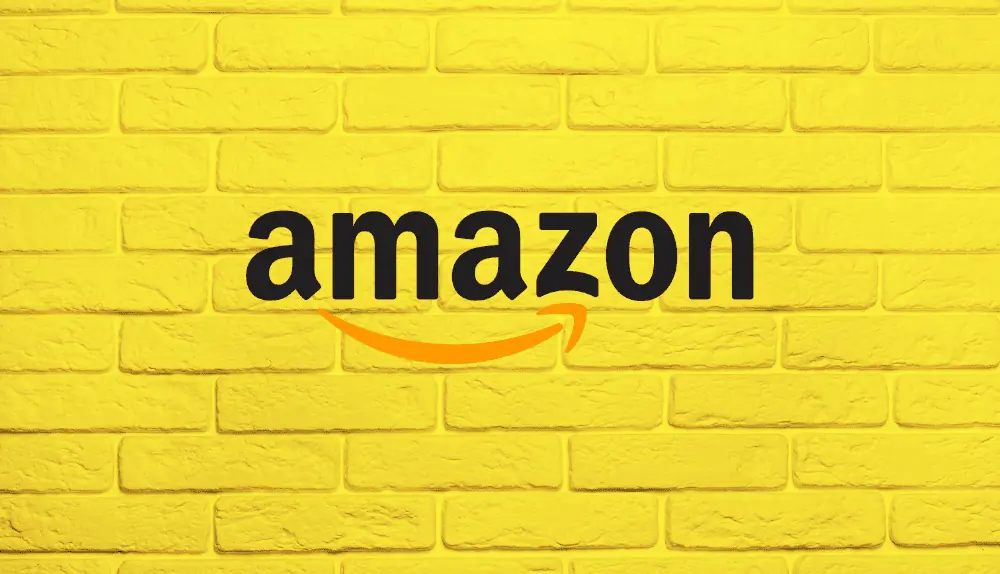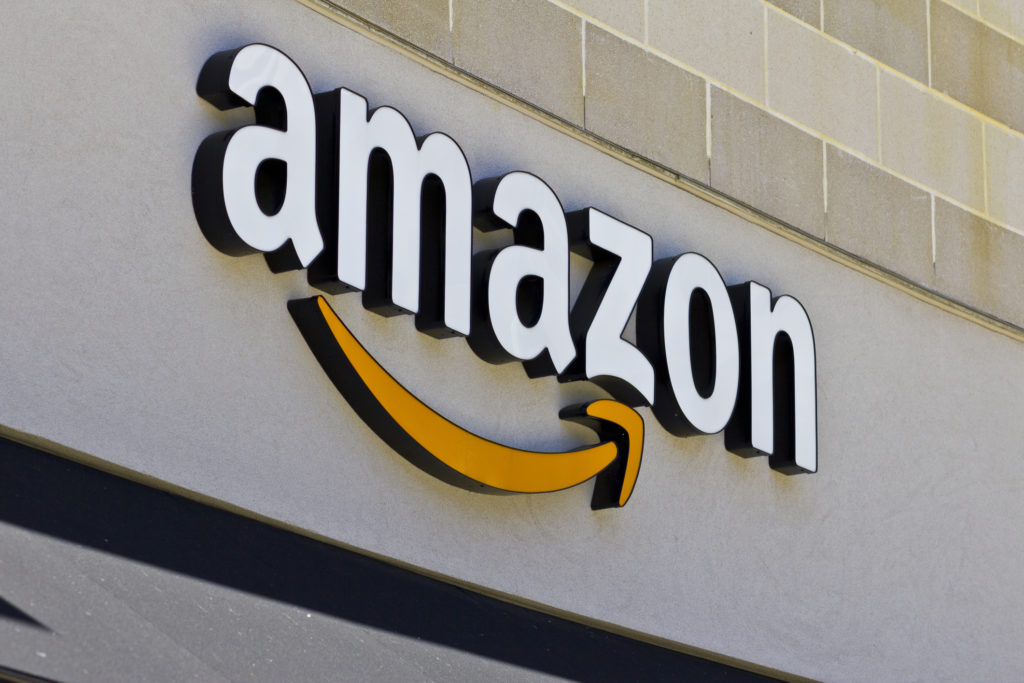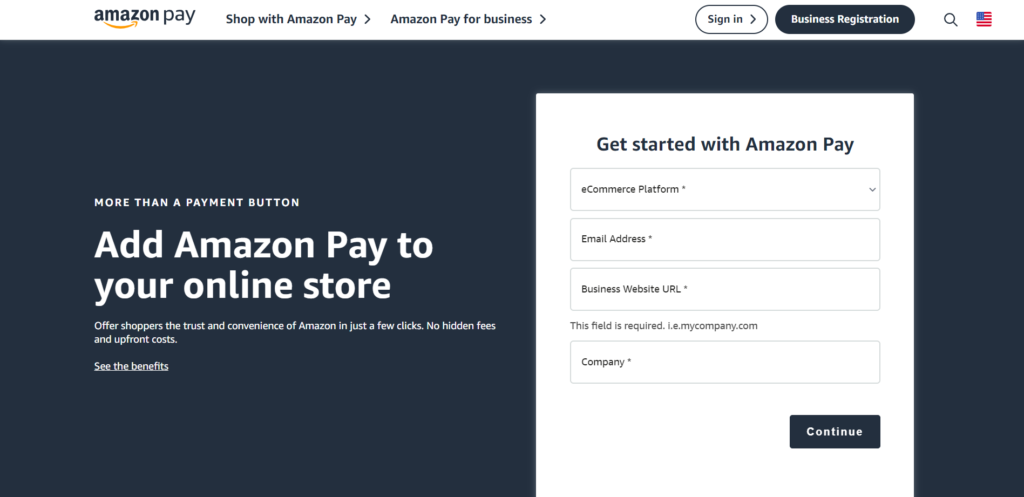Imagine you’re an online seller on Amazon, a huge digital marketplace with customers from all over the world. Your hard work has paid off, and your products are selling well. But suddenly, you get an alert about an Amazon chargeback – a customer asking for their money back.
It can be really stressful! Many sellers have faced this before, and with the right knowledge, you can handle it. In this guide, we’ll show you how to deal with an chargeback on Amazon step by step.
Amazon Seller Services vs. Amazon Pay
Amazon Seller Services and Amazon Pay are two distinct offerings by the e-commerce giant, each serving different purposes for sellers and customers alike.
Amazon Seller Services primarily cater to businesses and individuals looking to sell their products on Amazon’s platform. It provides a comprehensive suite of tools and resources to facilitate smooth selling, from product listing and inventory management to order fulfillment and customer service.
With Seller Services, sellers can tap into Amazon’s vast customer base, leverage their advanced logistics infrastructure, and benefit from their well-established brand credibility.

Image source: Amazon Seller Services
On the other hand, Amazon Pay is a payment processing service designed to simplify the checkout process for customers shopping on external websites. It allows users to use their Amazon account information to complete transactions quickly and securely without the need to enter payment details each time they shop.
For merchants, Amazon Pay offers a streamlined payment solution that can potentially increase conversion rates and reduce cart abandonment, as customers find it convenient and trustworthy.
While Amazon Seller Services focus on empowering sellers to succeed on Amazon’s marketplace, Amazon Pay aims to enhance the customer experience by offering a seamless payment option across various online retailers. Both services play crucial roles in Amazon’s ecosystem, ultimately contributing to the company’s mission of providing a frictionless and enjoyable shopping experience for customers while facilitating growth opportunities for sellers in the digital marketplace.
Amazon Chargeback: Understanding Types and Implications

Chargebacks are an integral part of the payment dispute resolution process on Amazon, affecting both sellers and customers. When a customer disputes a transaction claiming issues with the purchase, Amazon initiates a chargeback, which essentially reverses the payment and returns funds to the customer. Chargebacks can significantly impact sellers, as they not only lose the sale revenue but may also face additional fees and penalties. Let’s explore the different types of Amazon chargebacks and their implications for both sellers and customers.
Amazon Seller Chargebacks
Amazon Seller Chargebacks are initiated when customers dispute transactions related to products or services sold on the Amazon platform. These chargebacks can occur for various reasons and require sellers to respond with compelling evidence to refute the customer’s claim.
- Unauthorized Transaction Chargebacks: Customers may claim they did not make or authorize the purchase. Sellers need to prove that the transaction was legitimate to avoid losing funds.
- Defective or Not as Described Chargebacks: Customers may assert that the product received was not as described or was defective. Sellers must provide evidence of accurate product descriptions and quality to challenge such chargebacks.
- Service or Product Not Received Chargebacks: Customers might claim they never received the ordered product or service. Sellers must provide proof of delivery or service fulfillment to combat these chargebacks effectively.
- Duplicate Transaction Chargebacks: Chargebacks may arise if customers are charged multiple times for a single purchase. Sellers need to ensure their payment systems are glitch-free to prevent such issues.
- Credit Not Processed Chargebacks: Customers may request refunds for returned products, but sellers fail to process the credit. Timely processing of refunds is crucial to avoid these chargebacks.
Amazon Pay Chargebacks
Amazon Pay is a payment processing service that allows customers to use their Amazon account information to complete transactions on external websites. Chargebacks related to Amazon Pay transactions impact sellers using this payment method.
- Unauthorized Payment Chargebacks: Similar to unauthorized transaction chargebacks, customers may dispute Amazon Pay transactions, leading to chargebacks for sellers. Implementing strong security measures can help prevent such occurrences.
- Service or Product Not Delivered Chargebacks: Customers may claim non-receipt of products or services for Amazon Pay transactions, requiring sellers to furnish evidence of delivery or service fulfillment.
- Cancellation Disputes Chargebacks: Chargebacks can arise if customers assert that they canceled a recurring payment, but it continues to be charged. Proper subscription management is vital to avoid such chargebacks.
Overall, understanding the different types of Amazon chargebacks is crucial for sellers to protect their revenues and reputation. By being proactive, maintaining transparent communication with customers, and providing accurate documentation, sellers can effectively dispute chargebacks and foster a positive shopping experience on the Amazon platform.
How to Respond to Chargeback on Amazon?

Responding to Amazon chargebacks requires prompt action and thorough documentation. Here’s a step-by-step guide on how to handle and respond to chargebacks effectively:
- Act Quickly: When you receive an Amazon chargeback notification, don’t delay your response. Chargeback disputes have specific timeframes within which you must respond to avoid losing the case automatically.
- Review the Chargeback Reason: Carefully examine the reason provided by the customer for the Amazon chargeback. Identify the specific issue raised, such as unauthorized transaction, product not as described, or non-receipt of goods.
- Gather Evidence: Assemble all relevant evidence to dispute the chargeback. This may include order details, shipping information, tracking numbers, product descriptions, customer communications, and any other documentation supporting your case.
- Contact the Customer: Reach out to the customer to address their concerns promptly. If the chargeback is due to a misunderstanding or an issue that can be resolved, try to resolve it amicably with the customer and ask them to retract the chargeback.
- Submit a Rebuttal: Use Amazon’s Seller Central platform to submit a rebuttal against the chargeback on Amazon. Provide a clear and detailed explanation, along with the evidence you’ve gathered, to support your claim. Be concise and straightforward in your response.
- Comply with Amazon’s Policies: Ensure that your response aligns with Amazon’s policies and guidelines. Provide accurate information and avoid making false claims or promises.
- Monitor the Case: Stay vigilant and regularly check the status of the chargeback case. Amazon may require additional information or documentation during the dispute process, so be prepared to provide any requested details promptly.
- Accept Responsibility When Necessary : If the chargeback is valid and you made a mistake, accept responsibility for it. In such cases, it’s better to issue a refund to the customer and learn from the experience to avoid similar issues in the future.
- Prevent Future Chargebacks: Analyze the reasons for the chargeback and take preventive measures to reduce the likelihood of similar disputes in the future. Improve product descriptions, enhance customer service, and implement robust fraud prevention measures.
- Track Chargeback Trends: Keep track of recurring chargeback reasons to identify any patterns or systemic issues. Address these issues proactively to maintain a positive selling reputation.
Remember, responding to chargebacks effectively is crucial for preserving your seller metrics and reputation on Amazon. By following these steps and being proactive in resolving customer issues, you can mitigate the impact of Amazon chargeback and provide a positive shopping experience for customers on the platform.
How to Fight Amazon Chargebacks
Fighting an Amazon chargeback can be a challenging but crucial process for sellers to protect their revenues and reputation. Here are essential steps to effectively fight and dispute an Amazon chargeback:
Understand the Reason
Thoroughly review the chargeback on Amazon notification to understand the reason given by the customer for the dispute. Identifying the specific issue is essential in building your defense.
Gather Solid Evidence
Collect all relevant evidence to support your case. This may include order details, shipping information, tracking numbers, delivery confirmation, product descriptions, customer communication, and any other documentation that proves the transaction was valid and met the customer’s expectations.
Prepare a Compelling Rebuttal
Craft a clear and concise rebuttal explaining your side of the story. Address each point raised in the chargeback reason and provide evidence to counter the claims effectively.
Adhere to Amazon Policies
Ensure that your response aligns with Amazon’s policies and guidelines. Avoid making false claims or engaging in aggressive language. A professional and polite tone is crucial during the dispute process.
Highlight Customer Satisfaction Efforts
Emphasize your commitment to customer satisfaction and provide evidence of your attempts to resolve the issue with the customer. If you offered a refund or replacement, mention it in your rebuttal.
Stay Proactive and Responsive
Regularly check the status of the Amazon chargeback case and promptly respond to any additional information requests from Amazon. Be proactive in providing any necessary details to strengthen your defense.
Consult with Experts (if necessary)
In complex cases or situations involving significant amounts, consider seeking advice from professionals with expertise in e-commerce and dispute resolution. They can provide valuable insights and strategies to bolster your case.
Learn from the Experience
Analyze the chargeback on Amazon to identify any areas of improvement in your products, services, or customer support. Taking steps to prevent similar issues in the future can help minimize the risk of future chargebacks.
Be Patient
The chargeback dispute process may take time. Stay patient and keep following up on the case until it is resolved.
By following these steps and presenting a strong case backed by compelling evidence, sellers can increase their chances of successfully fighting Amazon chargebacks and protecting their business interests on the platform.
How Amazon Determines Responsibility for Chargebacks?
Amazon determines responsibility for chargebacks through a careful investigation process. When a customer disputes a transaction, Amazon reviews the provided evidence from both the seller and the buyer. They consider order details, shipping information, tracking numbers, product descriptions, and customer communication.
The goal is to ascertain whether the seller fulfilled their obligations and if the customer’s claims are valid. Amazon then makes an informed decision on the responsibility for the Amazon chargeback, ensuring a fair resolution for both parties involved.
How to Use Amazon Seller Protection with Amazon Pay
Using Amazon Seller Protection with Amazon Pay can help sellers safeguard their transactions and minimize the risk of chargebacks or fraud. Here’s a step-by-step guide on how to leverage Amazon Seller Protection with Amazon Pay:
Enable Amazon Pay

Image source: Amazon Pay
Ensure you have enabled Amazon Pay as a payment method on your e-commerce website or platform. This integration allows customers to use their Amazon accounts to make purchases.
Understand Amazon Seller Protection Policies
Familiarize yourself with Amazon’s Seller Protection policies for Amazon Pay transactions. Understand the specific scenarios where you are eligible for protection against unauthorized payments, chargebacks, and certain fraudulent transactions.
Display Amazon Pay Logo
Clearly display the Amazon Pay logo on your website, especially during the checkout process. This helps build trust with customers, as they recognize the familiar Amazon brand.
Provide Accurate Product Descriptions
Ensure that your product descriptions are accurate and detailed to set clear expectations for customers. This reduces the chances of chargebacks due to product not as described claims.
Monitor Suspicious Activities
Keep a close eye on suspicious or unusual transactions. Implement fraud prevention measures and report any potentially fraudulent activity to Amazon Pay for further investigation.
Respond to Disputes Promptly
If a customer raises a dispute or chargeback on Amazon, respond to it promptly through Amazon Pay’s resolution center. Provide relevant evidence to support your case and challenge the chargeback if necessary.
Stay Informed
Stay updated on Amazon Pay’s Seller Protection policies and any changes to them. Regularly review your transactions and performance to identify areas for improvement.
![]() Recommended reading: Amazon fraud
Recommended reading: Amazon fraud
By following these steps and leveraging Amazon Seller Protection with Amazon Pay, sellers can enhance transaction security, reduce chargebacks, and provide a smoother shopping experience for customers, ultimately building trust and loyalty in their online business.
How to Qualify for Amazon Seller Fraud Protection
To qualify for Amazon Seller Fraud Protection, you must provide specific information to Amazon when dealing with chargebacks. This includes the order ID number, proof of delivery, the product description, and your business’s terms and conditions.
By supplying this evidence, you demonstrate transparency and accountability in your transactions, which helps Amazon assess your eligibility for fraud protection.
Maintaining a good selling history, adhering to Amazon’s policies, and promptly responding to customer inquiries also play a vital role in qualifying for this protection. A track record of positive customer experiences and a commitment to resolving disputes can further enhance your chances of qualifying for Amazon Seller Fraud Protection.
By meeting these criteria, you can safeguard your business against fraudulent chargeback on Amazon, bolster customer trust, and enjoy the benefits of Amazon’s protection program.
Types of Chargebacks Amazon Protects You Against
Amazon provides Seller Fraud Protection to safeguard sellers against certain types of chargebacks. While the specific coverage may vary, the protection typically extends to the following types of chargebacks:
Unauthorized Transaction Chargebacks
Amazon Seller Fraud Protection may cover chargebacks resulting from customers claiming they did not make or authorize the purchase. Sellers are protected against financial losses in these cases.
Service or Product Not Received Chargebacks
When customers dispute a transaction, stating they never received the ordered product or service, Amazon Seller Fraud Protection can provide coverage for eligible sellers.
Defective or Not as Described Chargebacks
Chargebacks related to customers claiming that the product received does not match the description or is defective may be covered under the protection.
Duplicate Transaction Chargebacks
Amazon Seller Fraud Protection may extend to cover instances where customers are charged multiple times for a single purchase.
Credit Not Processed Chargebacks
If customers request refunds for returned products but sellers fail to process the credit, Amazon’s protection can provide coverage to eligible sellers.
It’s essential for sellers to understand the terms and conditions of Amazon Seller Fraud Protection to ensure they meet the eligibility criteria for coverage. By qualifying for this protection, sellers can minimize the financial impact of chargebacks arising from these specific scenarios, enhancing their confidence and security while selling on the Amazon platform.
How to Fight Chargebacks Amazon Won’t Protect You Against
When dealing with chargebacks that Amazon won’t protect you against, sellers must take proactive steps to dispute and challenge the claims effectively. Here’s how to fight chargebacks in such situations:
Gather Comprehensive Evidence
Collect all relevant documentation related to the transaction, including order details, shipping information, delivery confirmation, and customer communication. Having strong evidence to support your case is crucial.
Review Chargeback Reason Codes
Understand the specific reason codes provided by the customer’s issuing bank for the chargeback. This will help you tailor your response accordingly.
Prepare a Convincing Rebuttal
Craft a detailed and persuasive rebuttal letter, addressing each aspect of the chargeback reason and providing evidence to disprove the customer’s claims.
Reach Out to the Customer
Attempt to communicate with the customer and address their concerns directly. Offer solutions or alternatives to resolve the dispute amicably.
Consult with Your Payment Processor
If you use a payment processor other than Amazon, consult with them for guidance on disputing chargebacks. They may have specific procedures to follow.
Be Persistent and Timely
Respond to the chargeback promptly and be persistent in following up with the issuing bank or payment processor. Missing deadlines could result in an automatic loss of the case.
Seek Legal Advice (if necessary)
In complex or high-value chargeback cases, consider seeking legal advice from professionals experienced in dispute resolution and payment processing.
Learn from the Experience
Analyze the chargeback and identify areas for improvement in your products, services, or customer support to prevent similar issues in the future.
Implement Fraud Prevention Measures
Strengthen your fraud prevention measures to reduce the likelihood of fraudulent chargebacks.
Maintain Open Communication with Payment Providers
Keep your payment providers informed of any challenges you face with chargebacks. They may provide insights and support in managing future disputes.
While Amazon Seller Protection may not cover certain chargebacks, sellers can still take proactive measures and dispute effectively to protect their business interests and maintain a positive reputation in the e-commerce marketplace.
Amazon Chargeback Fees
Amazon chargeback fees can vary depending on the reason for the chargeback and the seller’s actions. Here are some typical chargeback fees that sellers may encounter on Amazon:
Dispute Chargeback Fee
Amazon charges a fee, usually around $20, to sellers for disputing a chargeback. This fee is applicable regardless of the outcome of the dispute.
Violation of Amazon Guidelines Fee
If the item being sold violates Amazon’s guidelines, such as expired products, missing labels, or unapproved packaging, sellers may be subject to a chargeback fee equivalent to 25% of the item’s cost.
Cancellation or Incorrect Shipping Method Fee
For canceled orders or orders shipped using incorrect shipping methods, sellers may incur a chargeback fee of around $10.
Incorrect Delivery Method Fee
If the seller fulfills an order using a delivery method different from what was originally stated, they may be charged an additional $10 fee.
Failed Delivery Fee
When sellers fail to deliver an order, whether due to stock issues or other reasons, they may be charged a fee equivalent to 10% of the order’s cost.
It is essential for sellers to be aware of these chargeback fees and take measures to prevent them by adhering to Amazon’s guidelines, ensuring accurate product descriptions, providing excellent customer service, and promptly fulfilling orders. By maintaining high standards, sellers can minimize the occurrence of chargebacks and avoid the associated fees, preserving a positive selling reputation on the Amazon platform.
Preparing Yourself for Future Amazon Chargeback Claims
To prepare for future Amazon chargeback claims and mitigate their impact on your business, follow these proactive steps:
Maintain Detailed Records
Keep thorough records of all transactions, order details, shipping information, and customer communication. Having organized documentation will strengthen your case during disputes.
Excellent Customer Service
Prioritize excellent customer service to address any issues or concerns promptly. Clear and responsive communication can prevent disputes from escalating to chargebacks.
Accurate Product Descriptions
Provide detailed and accurate product descriptions with high-quality images. This helps set proper expectations and reduces the likelihood of chargebacks related to product discrepancies.
Secure Packaging and Shipping
Ensure that products are packaged securely and shipped with reliable tracking methods. This reduces the risk of chargebacks for non-receipt of goods.
Transparent Policies
Clearly communicate your return, refund, and cancellation policies to customers. Transparency builds trust and can help prevent disputes and chargebacks.
Fraud Prevention Measures
Implement fraud prevention tools and practices to detect and prevent suspicious activities. This can reduce the risk of chargebacks resulting from fraudulent transactions.
Monitor Performance Metrics
Regularly review your seller performance metrics on Amazon to identify any areas of improvement. Maintaining high standards reduces the chances of chargebacks.
Stay Informed
Stay updated on Amazon’s policies and guidelines to ensure compliance and understand how to handle chargeback situations effectively.
Adhere to Amazon’s Policies
Follow Amazon’s guidelines for selling, shipping, and customer interactions. Complying with their policies improves your chances of resolving disputes in your favor.
Seek Professional Advice
In complex chargeback cases, consider seeking advice from professionals with expertise in dispute resolution and e-commerce.
By implementing these strategies, you can prepare your business to handle future chargeback claims proactively, reduce their occurrence, and maintain a positive selling experience on Amazon.
Conclusion
Dealing with chargebacks on Amazon can be tricky for sellers, but with the right knowledge and proactive approach, it can be manageable. Chargebacks can happen for different reasons, such as customers disputing transactions or claiming product issues.
Sellers need to understand the types of chargebacks and how to handle them effectively. Amazon offers Seller Protection and Amazon Pay to help sellers protect themselves from some chargebacks.
To avoid chargebacks, sellers should provide accurate product descriptions, deliver orders on time, and offer excellent customer service. It’s crucial to prevent fraudulent activities and keep track of performance metrics. By being proactive and responding quickly to disputes, sellers can minimize the impact of chargebacks on their businesses.
Frequently Asked Questions (FAQs)
How can sellers respond to chargebacks effectively?
Sellers can respond to chargebacks by providing compelling evidence, such as order details, shipping information, and customer communication, to dispute the claim. Prompt communication and proactive resolution with customers can also prevent chargebacks.
What are the common types of chargebacks on Amazon?
Common types of chargebacks on Amazon include unauthorized transactions, product not as described, non-receipt of goods, and duplicate charges.
How can sellers prevent chargebacks on Amazon?
Sellers can prevent chargebacks by providing accurate product descriptions, delivering orders on time, offering excellent customer service, implementing fraud prevention measures, and adhering to Amazon's policies and guidelines.
Can chargebacks affect a seller's reputation on Amazon?
Yes, chargebacks can impact a seller's reputation and metrics on Amazon. Excessive chargebacks may lead to penalties, account suspension, or loss of selling privileges.
What should sellers do if they receive a chargeback?
Sellers should carefully review the chargeback reason, gather evidence, and respond promptly through Amazon's dispute resolution process. Addressing chargebacks promptly can improve the chances of resolving them in the seller's favor.
Is Seller Protection available for all types of chargebacks?
No, Seller Protection may not cover all types of chargebacks. It typically applies to specific scenarios, such as unauthorized transactions or fraudulent activities.
How can sellers stay informed about chargeback policies?
Sellers can stay informed about chargeback policies by regularly checking Amazon's Seller Central, reviewing updates, and seeking support from Amazon Seller Support if needed.

